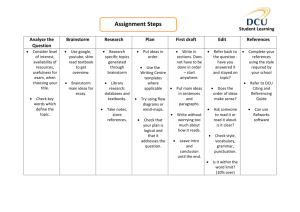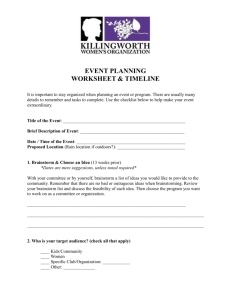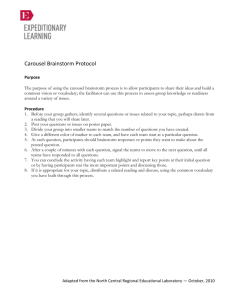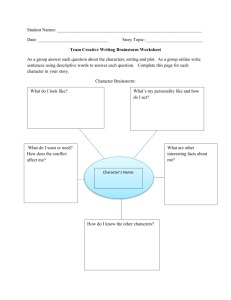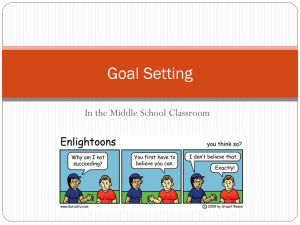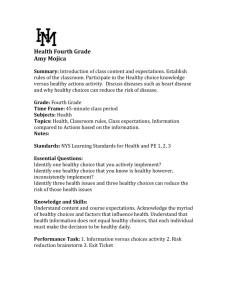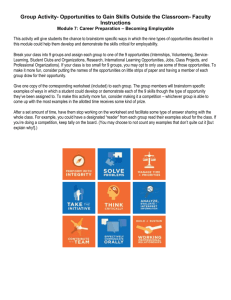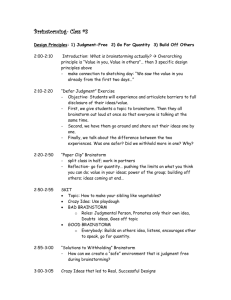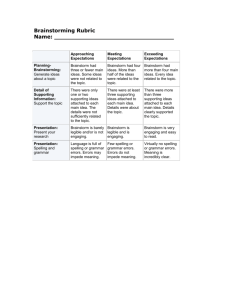Lesson plan
advertisement
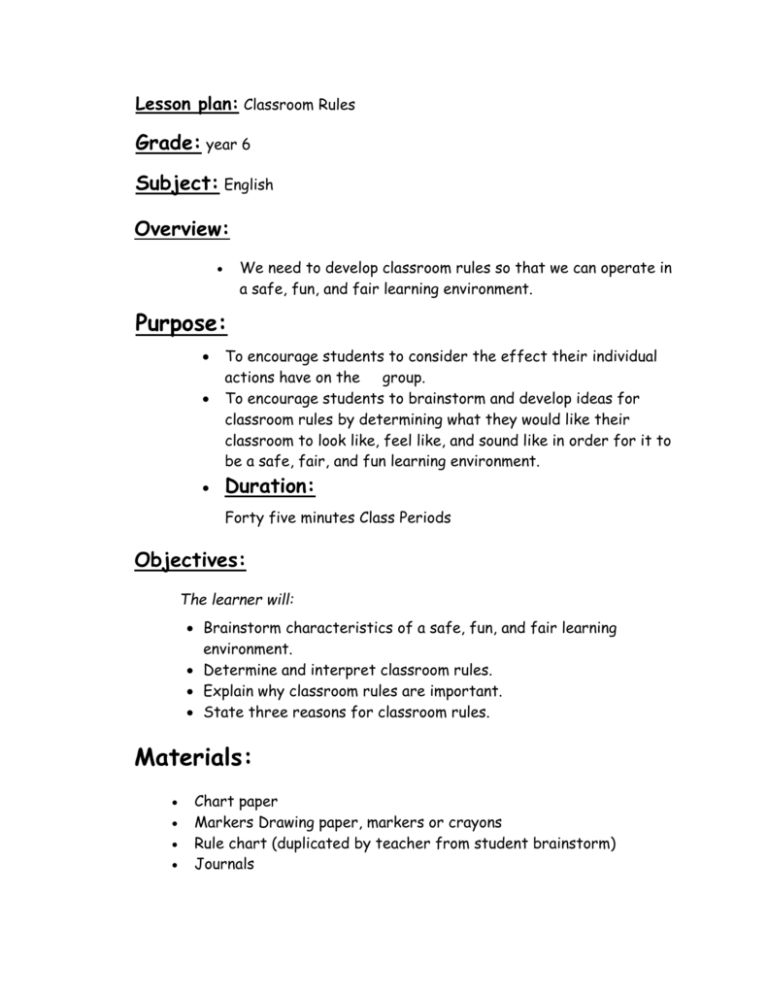
Lesson plan: Classroom Rules Grade: year 6 Subject: English Overview: We need to develop classroom rules so that we can operate in a safe, fun, and fair learning environment. Purpose: To encourage students to consider the effect their individual actions have on the group. To encourage students to brainstorm and develop ideas for classroom rules by determining what they would like their classroom to look like, feel like, and sound like in order for it to be a safe, fair, and fun learning environment. Duration: Forty five minutes Class Periods Objectives: The learner will: Brainstorm characteristics of a safe, fun, and fair learning environment. Determine and interpret classroom rules. Explain why classroom rules are important. State three reasons for classroom rules. Materials: Chart paper Markers Drawing paper, markers or crayons Rule chart (duplicated by teacher from student brainstorm) Journals Instructional Procedure(s): Teacher will explain to students, “we have many sets of rules that are made for a reason such as”: - school rules - road rules - rules for games and sports Make student think about Rules - What is a rule? Have students give examples they are familiar with? Groups brainstorm and report back on what rules do we have at home? What rules do we have in our classroom? What rules do we have at school? Students list as many rules as they can think of under each category. Pupils discuss and report back on the following… - Why were the rules made? - Who made the rules? - How helpful are these rules? Explain that the class is going to develop classroom rules, but that it is important to know why we have rules. We have rules for three reasons: o To help keep us safe o To help us get along and work together o To help us learn. Have groups put classroom rules under closer scrutiny by listing the consequences of breaking each rule, e.g. what if we all shouted out instead of putting up our hands to answer questions? Are there some classroom rules that need changing or even scrapping? Debate: ‘We are more likely to obey rules if we have had a say Sitting in a discussion circle, ask the students to brainstorm what the classroom would sound like, feel like, and look like if it were a safe, fair, and fun learning place. Encourage students to state the rules positively, saying what the children should do as opposed to what they should not do as much as possible. Try to discourage negative responses such as "Nobody would be pushing anyone" or "Don't kick." Encourage the students to phrase their answers positively, such as "Everyone would keep their hands and feet to themselves." Students will brainstorm room rules and teacher will write them on the board. After the students brainstorm ideas, finalize the list making sure that the rules are stated in language that the students can understand. A small picture next to each rule will help the students decipher the words. Copy the room rules onto a chart and display in classroom. Student should be reminded of the classroom rules at the beginning of each term/ break and if we need to modify any of this rules to meet the changing needs of the class. Evaluation: In evaluating student work, check to see that the following was accomplished: Note whether children were able to develop classroom rules. Ask students to tell ways that each rule will help them in school. Students contributed to the discussion of positive behaviors. A written list of class rules was formed from their responses. The classroom pictures clearly show them participating in a positive way, and students are able to verbally communicate that to their peers. Suggest future changes that would make the class rules more successful in protecting rights. Classroom Rules Put our hands up to speak Remember to share with others. Remember to keep the classroom tidy Remember to listen to the person speaking and be polite

